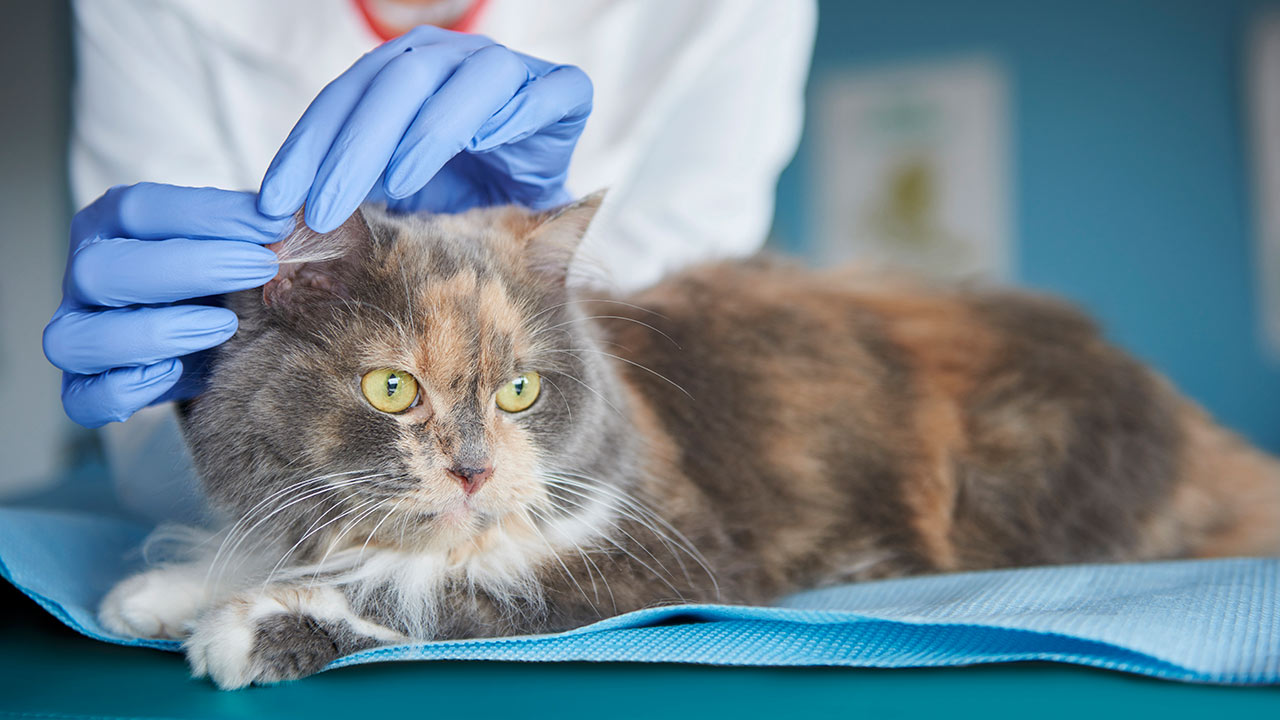Our pets are undeniably part of our families, in most cases everyone’s favourite member! As their pet parents we shower them with love to keep them healthy and happy, which comes in all forms including cuddles, good food, toys, and exercise.
But perhaps one of the most important ways of showing our love is through regular veterinary visits for preventative healthcare advice, including parasite protection.
Parasites include critters that can live on our pets such as fleas and ticks, or inside our pets such as roundworms and tapeworms. Keeping our pets free from parasites is a vital act of love as they can negatively affect our pet’s health and quality of life, but also the health of our human family members.
Luckily, protecting your family from these nasties is simple with the help of your vet. First let’s discover what is lurking out there, then what we can do to protect our loved ones.
Why are fleas and ticks so gross?
Fleas are insects that can jump on our pets (or us!) and can exist both outside and inside our homes all year round. They feed on blood causing intense irritation, potentially triggering allergies and spreading diseases which can affect pets and humans (e.g. flea tapeworm and cat scratch fever).
Fleas have a clever lifecycle with multiple life stages. Adult fleas can lay up to 50 eggs a day which fall off pets onto the carpet, bedding, sofa, or the environment wherever they are at the time. These develop into larvae and then pupae which hatch into adults when there is a tasty host nearby. In ideal conditions it can take between 14 and 140 days for a flea egg to develop into an adult, and they can hide as the resistant pupae stage for up to a year.
95% of flea life stages live in the environment rather than on pets and they are tricky to spot. So, if you do discover fleas on your pet, there will be an awful lot of flea eggs, larvae, or pupae elsewhere in your home. As fleas reproduce quickly and have such a clever lifecycle, infestations can get out of hand rapidly and pets need effective treatment that extends to at least 12 weeks for an infestation to fully resolve.
Ticks are closely related to spiders, but like fleas also feed on blood and can attach themselves to our pets or us humans for a feed. Adult ticks start off tiny and hard to spot, but as they fill with a blood meal, they can swell to up to 10 times their size to over 1cm in length.
Some tick species lurk in vegetation such as grass, waiting for a warm body to pass by that they can attach to and feed from. In warmer parts of Europe, such as the Mediterranean, one species can also exist in our homes.
Ticks are second only to mosquitoes in the number of diseases they can carry and pass on, some affect our pets, some affect humans and some affect everyone (e.g. Babesiosis, Lyme Disease and Tick-borne encephalitis).
Ticks have several small life stages which are really tricky to spot, so you may not be aware that your pet has been exposed, or you may only realise once an adult tick has been feeding some time. If you do spot a tick on your pet, it should be carefully removed with a special tick hook (your veterinary clinic can show you how), and your pet will need treatment to kill off the smaller, harder to spot life stages.
The weather is getting warmer, and we all enjoy frequent adventures with our pet family members to more places. Therefore, ticks can be a risk all year round and we are seeing increasing numbers of ticks and incidences of the diseases they carry in more locations, so long-term effective protection is advisable.
There are other parasites out there, but that’s enough ick for now, so let’s find out how to protect your pet by giving these nasties the flick.
How can you protect your beloved pet?
Pet parasiticides are a group of medicines used to treat and prevent parasite infestations.
Your pet is as unique as you are, so their risk of different parasites will therefore vary depending on many factors including their lifestyle and where you live. There are also many pet parasiticides out there which are not created equal. They come in many forms and contain different active ingredients that provide cover for different parasites to varying extents and for varying lengths of time.
Your vet will therefore chat with you to understand your pet’s lifestyle and environment so they can prescribe the best option for your family.
In the case of flea and tick control, the best way to protect your pet from these year-round risks and the diseases they carry is to provide effective long-term treatment. You will find there are spot-on, chew and injectable options available, amongst others, and they can be effective for 1 month, 3 months or even longer, depending on which option you choose.
OR (choose either the paragraph above or below, subject to your license status)
In the case of flea and tick control, the best way to protect your pet from these year-round risks and the diseases they carry is to provide effective long-term treatment. You will find there are different application options available, including spot-ons and oral chews, and they can be effective different lengths of time, e.g. 1 month or 3 months, depending on which option you choose.
When deciding which product is best for your pet, your vet will consider for example if your pet is a keen swimmer or is regularly bathed. The effectiveness of some spot-ons can be decreased by water which is not good news for your pet or the environment. Some spot-ons are absorbed into the blood, so you can bathe your animal after a certain time which your vet can advise you on. However, if like me you have a keen swimmer, you may prefer to go with a non-spot-on option.
Some parasiticides contain active ingredients that target fleas and ticks, others target only fleas and some fight internal parasites, so it is important to understand what you are covering for.
It is also important to consider how long the product lasts for, so you can give the next dose on time. Sneaky pests like fleas and ticks can take advantage of breaks in protection and jump on for a feed, so you may find longer-acting products and/or setting reminders on your phone or in your diary helpful to avoid this.
Your vet will also weigh your pet to ensure they prescribe the right dose so that it is effective and not too much for them. It is important you only give the parasiticide to the pet it is prescribed for, not only to ensure they get the right dose, but there are also different products for cats and dogs, and they must be only administered to that species, as for example some products contain pyrethroids which are toxic to cats.
Internal parasites (e.g. roundworms and tapeworms) are a whole other article, but your vet will also discuss the risks to your pet depending on their age, species, geographical location and lifestyle and will prescribe a combination of parasiticides that works for your family.
Life is busy but prevention is better than cure, so if you are to pick one act of love for your pet today (aside from the cuddles, they are without question), book an appointment with your vet to talk about your beloved pet’s parasite risk and how you can best protect them.





